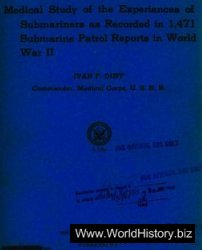Anyone wishing to unravel the history of the relationship between Byzantium
and Armenia from late antiquity into the eleventh century has
to confront a series of historical and historiographical challenges. The
most immediate, and intractable, of these is one of definition: what does
‘Armenia’ mean? Although Armenia is used to express a territorial entity
in contemporary texts, both Armenian and non-Armenian in origin, its
precise meaning varies according to the date and the context in which it is
used. Far from finding a single, stable definition of Armenia, one discovers
multiple ‘Armenias’.1 Thus a seventh-century Armenian geographical compilation
depicts ‘Great Armenia’ as comprising not only regions currently
recognised as Armenian but also those with historic associations.2 Successive
provinces of Armenia were imposed and superimposed by external powers,
each with a particular scope. The kingdom of Armenia, re-established in
884, bore little relation to its Arsacid precursor and increasingly represented
only the Bagratuni kingdom centred on Ani, excluding rival kingdoms in
Vaspurakan, Siwnik‘ and elsewhere.
Given the absence of stable territorial boundaries and in the light of
significant Arab settlement in certain districts from the end of the eighth
century, there have been attempts to construct Armenian identity in terms
of a blend of confessional, linguistic and cultural features. Once again the
evidence supports a plural and inclusive definition. Instead of a community
of believers, united around a single confession and recognising the spiritual
authority of a single leader, the Armenian church embodied a spectrum
of doctrinal interpretations, revolving largely, but not exclusively, around
the acceptance or rejection of the council of Chalcedon.3 This interpretation
is at odds with the conventional outline of Armenian church history
supplied by the majority of the Armenian sources, which advertise a pronounced
anti-Chalcedonian, monophysite character after 600. Yet the faint
impression of a pro-Chalcedonian, and arguably pro-Byzantine, party may
still be traced and other schismatic traditions may have survived long after
their suppression elsewhere.4 Nor is there good evidence for either linguistic
or cultural uniformity. Whilst the written form of the Armenian language
may once have possessed such a quality, it seems inherently unlikely that
contemporary speech was ever uniform. An eighth-century cleric, Stephen
of Siwnik‘, identified seven dialects, all associated with remote, mountainous
districts.5 As for cultural uniformity, one has only to think of the
selective histories, sponsored by princely houses to their own glory and the
denigration of others, the multiple versions of the History of Agathangelos
describing the conversion of Armenia or the different traditions surrounding
the relics of Gregory the Illuminator, to appreciate that the past was
essentially plastic, at the disposal of contemporary writers to develop and
rework as they thought fit.6
When one considers the fragmented, isolating topography of the central
Caucasus region, the individual districts of varying size, wealth and potential,
the harsh continental climate, the dispersed settlement pattern focused
upon the village, the frontier status of the region through the period, partitioned
between Rome and Persia and then Byzantium and the caliphate,
the lack of organic national political institutions, the long-standing doctrinal
divisions within the Armenian church, the presence of different dialects
and languages, even the potential for different interpretations of the past,
one can only conclude that ‘Armenia’ and ‘Armenian identity’ are complex
and elusive terms defying concrete definition and characterised by fluidity
and plurality. Instead of maintaining the fiction of a united Armenia or a
singular Armenian identity, Armenian diversity and incongruity deserve to
be highlighted.
A second challenge is the uneven treatment in the primary sources of the
relationship between Armenia and Byzantium. At times, it receives significant
coverage but more often it remains frustratingly obscure, the periods
between 730 and 850, and between 925 and 980 being particularly opaque.
This may reflect a genuine lack of engagement. But it is also possible that
the outline of Armenian history presented by the majority of Armenian
sources is intentionally partial. Arguably, Armenian authors anticipated a
similar collective historical experience to that of the people of God in the
Old Testament and therefore stressed those contexts which replicated the
biblical paradigm, including valiant but ultimately unsuccessful resistance
against an oppressive and impious empire, exile and return. A neighbouring
Christian polity, particularly one which adhered to a rival confession
of faith, did not sit comfortably with this model and its influence was
therefore downplayed or ignored. Armenian histories are much more than
simple vehicles for the preservation of factual information; rather they are
complex compositions which need to be handled with care and exploited
only after careful textual criticism. Silence on the subject of Byzantium and
the imperial church should not be mistaken for lack of contact.
Finally, insofar as the literary sources record the development of Byzantium’s
relationship with Armenia, they tend to do so in terms of the principal
Armenian political and ecclesiastical leaders. Aswe shall see, Byzantium cultivated
multiple ties with several noble houses at the same time. In a society
characterised by intense competition between and within princely families,
in which those with ambition and ability attracted followers, acquired lands
and amassed wealth at the expense of those who did not, it paid to develop
links with as many potential clients as possible. Some of this evidence survives
only through contemporary Armenian colophons and inscriptions,
sources whose historical potential has not been fully exploited. By drawing
on these materials, as well as the twin disciplines of numismatics and sigillography,
a more complex, nuanced picture of their relationship begins to
emerge.




 World History
World History









